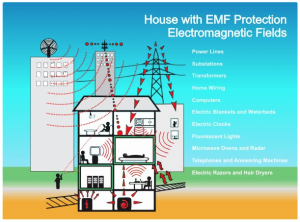“Exposure to electromagnetic fields in dwellings of children”
16/02/2017
Human exposure to electromagnetic fields from non-ionizing radiation has increased over recent decades, raising concerns about possible adverse health effects, although these remain controversial.
Humans are immersed in an electro- magnetic ‘‘bubble’’ due to the growing use of electricity-dependent technologies. Sources of residential exposure include high-voltage power lines, transformers, and domestic electrical installations. Individuals are also increasingly exposed to radio frequencies from radio stations and mobile phone/WIFI systems, among others.
It has been documented that children may be especially susceptible to exposure to electromagnetic fields; hence, there is a need to establish current levels of exposure in this age group.
123 families of the INMA cohort in Granada agreed to the exposure assessment at home and completed a specific ad hoc questionnaire gathering information on sources of non-ionizing radiation electric and magnetic fields inside the homes and on patterns of use. The study also carried out long-term indoor measurements in the living room and bedroom.
The study showed a low exposure in the children’s homes according to reference levels of the International Commission on Non-Ionizing Radiation Protection but with large differences among homes. The levels were higher in urban than in rural areas, and in apartments versus detached or semi-detached houses.
Given the greater sensitivity to electromagnetic fields from non-ionizing radiation of children preventive measures are warranted to reduce their exposure. One study found that the provision of specific recommendations to reduce field strengths in the home (e.g., unplugging devices not in use) led to a decrease in exposure levels.
Reference: Calvente I, Dávila-Arias C, Ocón-Hernández O, Pérez-Lobato R, Ramos R, Artacho-Cordón F, Olea N, Núñez MI, Fernández MF. Characterization of indoor extremely low frequency and low frequency electromagnetic fields in the INMA-Granada cohort. PLoS One. 2014 Sep 5;9(9):e106666. doi: 10.1371/journal.pone.0106666. eCollection 2014.


